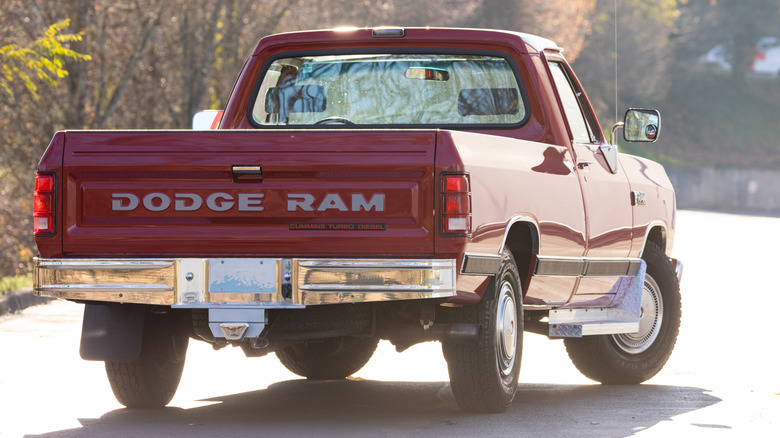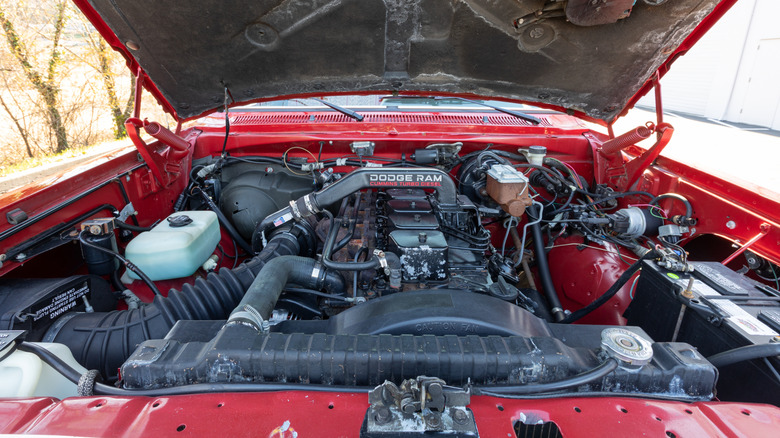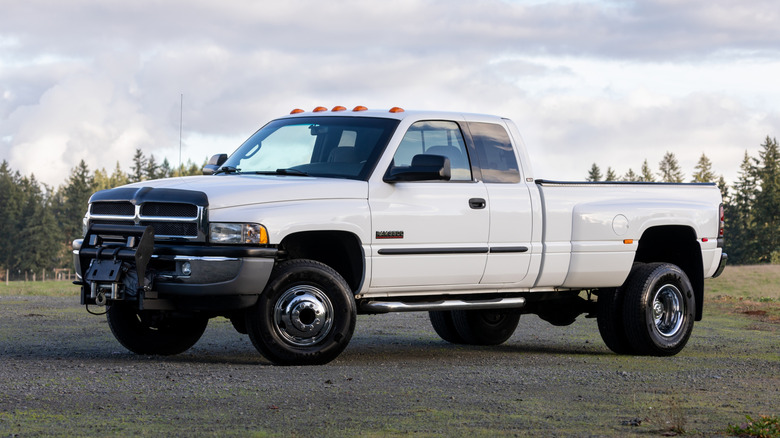How Cummins Helped Save Dodge & Gave Us The Ram Trucks We Know Today
It's tough to imagine a world without Ram heavy-duty trucks, but back in the 1980s, that was a real possibility. Dodge's truck division was on the ropes. Its offerings were stale, with designs that hadn't changed a lot since 1972, and sales were in a nosedive. They were also the last of the Detroit Big Three without a diesel option in their big trucks.
Facing an existential crisis, Chrysler's Truck Operations division made a bet that would change everything. Dodge partnered with Cummins, a company already well-known in the commercial vehicle space, which was looking to push its new B-series engine into the pickup arena. This wasn't a simple engine swap. The Cummins inline-six was actually a lot lengthier and heavier than anything Dodge used, so engineers had to perform some serious surgery by strengthening the truck's frame and suspension and completely overhauling the front end.
The result, hitting the streets for the 1989 model year, was a revelation. The first Cummins-powered Ram delivered a monstrous 400 pound-feet of torque, a figure that utterly humbled the diesel offerings from Ford and Chevrolet.
The two companies have come a long way since then. The legendary partnership, which has now been going strong for more than three decades, didn't just give Dodge a fighting chance. Many say that the Cummins engine outright saved the brand's entire truck division. This allowed it to thrive and expand into the diverse lineup we see today, which includes off-road models like the 2025 Ram 1500 Warlock.
Creating the Ram we know today
The Cummins option wasn't just a critical hit, it was a commercial juggernaut right out of the gate. Dodge sold 17,000 of the diesel trucks in that first year and, according to the Driving.ca report, it could have moved another 10,000 if it had the production capacity. The momentum was wild. The company rolled 100,000 diesel pickups off its assembly lines by 1991. A few years into the partnership, a staggering half of all heavy-duty Dodge trucks sold were equipped with a Cummins engine. This success forged the brand's modern identity and created a loyal customer base built on power and durability.
In fact, the bond between the two companies is so tight that Don Altermatt, Chrysler's chief engineer for Diesel Products, revealed to MotorTrend that the engineering teams from both companies meet every single day. This deep relationship has led to huge milestones, too, like the production of the three-millionth engine for Ram back in September 2019.
Dodge and Cummins' success kicked off the torque wars
The Cummins engine gave Dodge an immediate edge because it was turbocharged and used direct injection, technologies its rivals lacked at the time. Its initial 160 horsepower and 400 lb-ft of torque kicked off an arms race that continues to this day. This torque war, of sorts, saw Dodge and Ford constantly one-upping each other. For instance, when an updated Ram hit 420 lb-ft of torque in 1994, Ford quickly answered with 425 lb-ft. That exchange continued for years, pushing numbers ever higher. Of course, it helps that diesel engines produce a lot more torque than petrol engines.
By 2013, torque figures leaped to a massive 850 lb-ft in the early 2000s. With such dramatic climbs, it was only a matter of time before these engines reached the seemingly impossible four-figure future. That arrived in 2019, when Ram and Cummins were the first to smash the 1,000 lb-ft barrier. But the war wasn't over. Ford reclaimed the crown with 1,050 lb-ft in 2020, only for Ram to fire back with 1,075 lb-ft in 2021, a record it currently holds.


